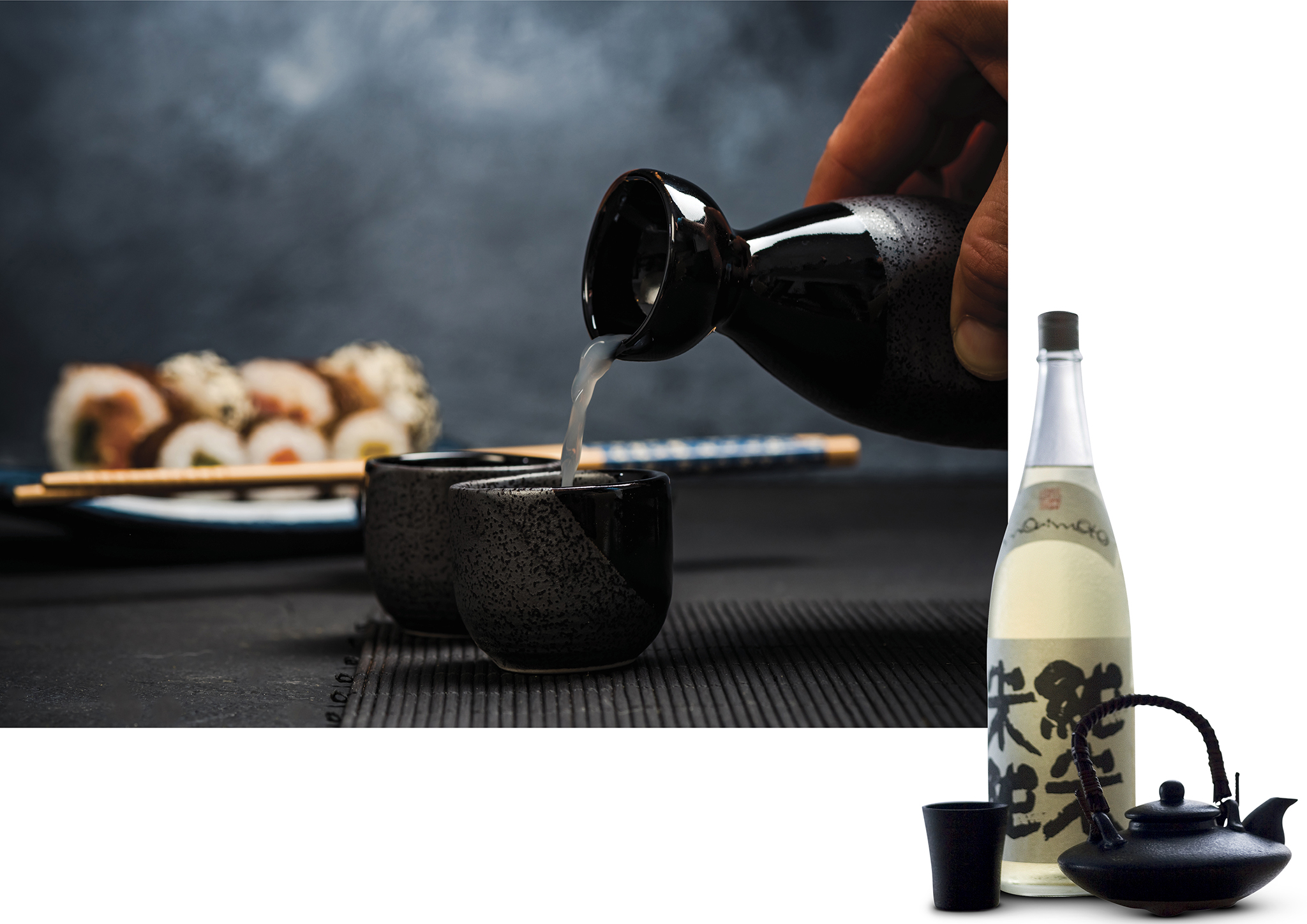g Edible Japan g Contents
日本酒
sake
The quintessential Japanese tipple
The Japanese call it nihonshu, in English it’s sake—whatever the terminology, it’s estimated that some form of fermented rice has been drunk in Japan for almost 2,000 years. From its earliest days being brewed at temples and shrines (where sake still plays a role in many rituals) through the first sake breweries in the Muromachi Period (1333–1573) to now, sake has become Japan’s national drink.
an ancient Process
The basic process followed by Japan’s 1,200 sake breweries, who between them produce roughly 37 million gallons (168 million liters) annually, has remained largely unchanged for generations. First, rice is polished, washed, and steamed, then mixed with yeast and koji (rice cultivated with a mold) and allowed to ferment over several days of mixing before being added to water for three or four weeks of full fermentation. Pressing, filtration, pasteurization, and maturation take place before bottling; then it’s ready to pour into a glass, give a kampai (cheers), and drink.

D Left: High-quality rice is essential for good sake. Right: Sake is matured in wooden casks made of cypress.
making the grade
The grade is a key part of a sake. At the most refined end of the scale comes junmai daiginjo, where the rice has been polished down to at least 50 percent. This is done because the outer part of the rice grain contains fats, proteins, and other things that can produce undesirable flavors or interfere with fermentation; the innermost core is where all the starches are found, and it’s these that ferment into top sake in the brewing process. The more the rice is milled, the more refined, fragrant, and light on the palate the final brew will be. And what makes junmai daiginjo extra special is the junmai (pure rice) part—no extra alcohol is added; the only ingredients are rice, water, koji, and yeast. With low- grade sake, brewed sake is mixed with large amounts of distilled spirits.
MANY choiceS
For aficionados, each sake is defined by its intricacies—where it was brewed and by whom, what rice was used and how extensively the rice was milled, what koji or yeast was employed and at what temperatures. For the average drinker, choices are made from much simpler criteria. With a standard form of sake, do you want something that is dry (karakuchi) or sweet (amakuchi)? And what temperature? For a standard sake, room temperature is common, as is chilled (reishu), but on a cold night a gently warmed sake (atsukan) is very appealing. It all comes down to your personal taste rather than rules or etiquette.
Sake is usually enjoyed with food. Whatever type of sake you opt for, in most restaurants and izakaya (pubs) you usually order it in a measure called an ichigo (6 fl oz /180 ml), which comes in a small decanter along with a very small glass or a ceramic cup (called a choko). Sometimes your sake will be served in a masu, a little wooden box with a glass inside that’s filled until it spills over into the box. Sake pairs beautifully with Japanese cuisine, but you can also try it with Western food, from cheese to steak and fries.

D Sake is frequently served in delicate ceramic cups.
